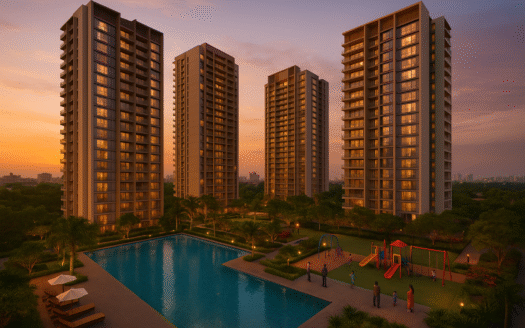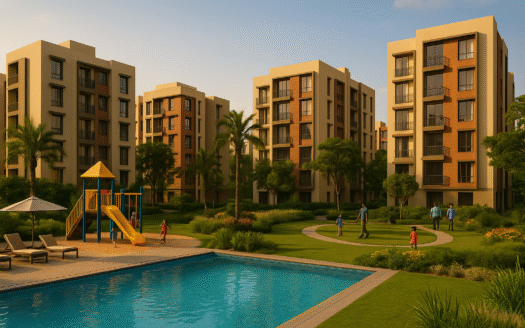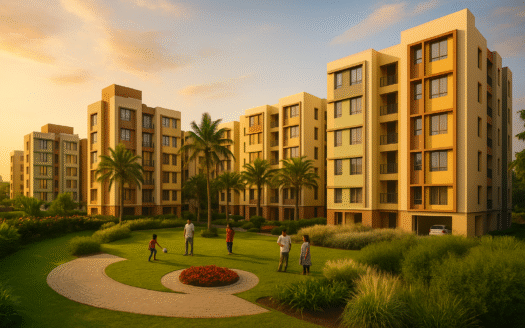Introduction
Buying a home is one of the most significant financial decisions, and securing the best home loan can make a huge difference in your long-term financial health. With interest rates fluctuating, various loan options available, and changing lending policies, understanding the nuances of home loans in 2025 is crucial.
This comprehensive guide will help you navigate the home loan process, ensuring you get the best deal with minimal hassle. We will discuss key factors influencing home loans, tips to improve eligibility, and strategies to secure lower interest rates. Additionally, we’ll explore common mistakes to avoid and how to maximize benefits from home loan schemes.
Key Takeaways
- Understanding Home Loan Types: Fixed-rate, floating-rate, and hybrid loans.
- Best Banks & Lenders for 2025: Competitive interest rates and benefits.
- Eligibility Factors: Credit score, income stability, and debt-to-income ratio.
- Government Schemes: Subsidies and benefits are available for first-time buyers.
- Interest Rate Negotiation: How to get the lowest possible interest rates.
- Hidden Charges to Watch For: Processing fees, prepayment penalties, and legal costs.
- Home Loan Documentation: What you need to get loan approval quickly.
- Mistakes to Avoid: Common errors that can delay or impact loan approval.
Home Loan Types: Choosing the Right One
| Loan Type | Description | Pros | Cons |
| Fixed-Rate Loan | The interest rate remains constant. | Predictable payments. | Higher initial rates. |
| Floating-Rate Loan | The interest rate varies with market trends. | Lower rates during declines. | Payments can fluctuate. |
| Hybrid Loan | A mix of fixed and floating rates. | Stability with flexibility. | Terms can be complex. |
Which One is Best for You?
- If you want stability, go for a fixed-rate loan.
- If you can handle fluctuations, a floating-rate loan can save you money.
- If you prefer a balanced approach, choose a hybrid loan.
 Factors That Affect Home Loan Eligibility
Factors That Affect Home Loan Eligibility
Home loan eligibility is a crucial component of the borrowing process, as it determines not only whether your loan will be approved but also the amount you can borrow and the interest rate you’ll receive. In 2025, lenders are increasingly data-driven and risk-conscious, which means they assess a wide range of factors before sanctioning a home loan.
Here are the most important factors that influence your eligibility:
1. Credit Score
Your credit score (CIBIL) is one of the first and most important parameters banks consider. A score of 750 or above significantly improves your chances of approval and may qualify you for lower interest rates and better loan terms.
- A poor credit history or frequent defaults may lead to loan rejection or higher interest rates.
- Regular repayment of EMIs and credit card dues helps maintain a healthy score.
Maintaining a strong credit score before applying for a home loan is one of the most powerful ways to improve eligibility and get better offers.
2. Income Stability
Lenders need assurance that you have a stable and consistent income source. Salaried individuals with permanent employment and self-employed professionals with consistent revenue streams are generally favored.
- Banks prefer borrowers with at least 2–3 years of job or business continuity.
- Sudden job changes, long employment gaps, or irregular income patterns can reduce your credibility in the eyes of the lender.
Submitting your latest salary slips, income tax returns (ITR), and bank statements helps verify your earning capacity and financial stability.
3. Debt-to-Income Ratio (DTI)
The debt-to-income ratio is the percentage of your monthly income that goes toward repaying existing loans and debts. A lower DTI indicates stronger repayment capacity and better loan eligibility.
- Ideally, your total monthly EMIs (including the proposed home loan) should not exceed 40% of your monthly income.
- If you’re already servicing personal loans or car loans or have high credit card usage, it may negatively impact your home loan application.
Lenders are more confident approving loans for borrowers with minimal financial obligations and strong disposable income.
4. Down Payment Capability
While banks finance 75% to 90% of the property’s value, your ability to make a larger down payment shows financial discipline and reduces the lender’s risk.
- A higher down payment often results in lower EMIs, better interest rates, and improved negotiation power.
- Some banks may even waive processing fees or offer faster approval for borrowers contributing 30% or more as upfront payment.
In addition, your savings for the down payment reflect your readiness for a long-term financial commitment.
5. Loan Tenure
The tenure of the home loan also plays a significant role in determining your eligibility.
- A longer tenure reduces the EMI burden, which increases the chances of qualifying for a higher loan amount.
- However, longer tenures also increase the total interest paid over the loan period.
In 2025, many borrowers are choosing balanced tenures (15–20 years) that offer affordable EMIs without excessively high cumulative interest.
6. Existing Loans & Liabilities
If you have multiple active loans—such as car loans, education loans, or significant credit card debt—it can limit your borrowing capacity.
- Lenders assess your current financial obligations to ensure you don’t get over-leveraged.
- A borrower with fewer existing liabilities is more likely to secure a larger loan amount at better terms.
If you’re planning to apply for a home loan, try closing small loans or consolidating debts before your application to enhance your eligibility.
 How to Get the Best Home Loan Deal in 2025
How to Get the Best Home Loan Deal in 2025
1. Compare Multiple Lenders
- Banks, NBFCs, and fintech lenders offer different interest rates and benefits.
- Use online comparison tools to get real-time rates.
2. Improve Your Credit Score
- Pay existing debts on time.
- Avoid multiple loan inquiries within a short period.
- Keep your credit utilization ratio below 30%.
3. Negotiate Interest Rates
- Approach multiple lenders and leverage competitive offers.
- Existing customers often get better deals from their current banks.
- Consider negotiating loan processing fees and hidden charges.
4. Consider Government Schemes
- Pradhan Mantri Awas Yojana (PMAY): Interest subsidy for first-time buyers.
- State-specific subsidies: Varies based on location and eligibility.
- RBI Directives: Keep an eye on regulatory benefits and interest rate guidelines.
5. Check for Hidden Charges
| Charge Type | Description |
| Processing Fee | One-time fee charged by lenders. |
| Prepayment Penalty | Charged for early loan repayment. |
| Legal Fees | Covers documentation and verification. |
| Late Payment Fees | Extra charges for missed EMI payments. |
6. Opt for Balance Transfer if Needed
- If interest rates drop significantly, transferring your loan to another bank can save you money.
- Check prepayment penalties before switching lenders.
- Ensure the new lender provides better terms before transferring.
Pro Tips for Securing a Favourable Home Loan
- Maintain a strong credit history.
- Choose the right loan tenure for manageable EMIs.
- Opt for pre-approved home loans for quicker processing.
- Consider co-borrowing with a spouse to improve eligibility.
- Monitor RBI interest rate policies for better timing.
- Get all necessary documents ready to avoid delays.
 Common Mistakes to Avoid When Applying for a Home Loan
Common Mistakes to Avoid When Applying for a Home Loan
- Not Checking Your Credit Score – Low scores lead to higher interest rates.
- Ignoring Hidden Costs – Always review loan agreements for extra charges.
- Choosing the Wrong Loan Tenure – Short tenures have higher EMIs, and long tenures cost more in interest.
- Applying for Multiple Loans Simultaneously – This can reduce creditworthiness.
- Not Comparing Lenders – The first offer may not be the best one.
Conclusion
Securing a home loan in 2025 doesn’t have to be complicated. By understanding loan types, comparing lenders, and improving financial health, you can secure the best deal with minimal stress. Whether you’re a first-time buyer or upgrading your home, taking an informed approach ensures long-term financial benefits.
Looking for expert advice on home loans? Get My Ghar helps you compare and secure the best home loan deals. Contact us today!
FAQs
Q1. What is the average home loan interest rate in India in 2025?
As of 2025, most Indian banks and NBFCs offer home loan interest rates ranging between 7% and 9% per annum, depending on various factors such as your credit score, income level, loan amount, and employment type (salaried or self-employed). Borrowers with strong creditworthiness and existing relationships with a lender often qualify for the lowest available rates.
It’s always advisable to compare interest rates from multiple financial institutions and also check for seasonal offers or special schemes available for first-time homebuyers.
Q2. How can I improve my home loan eligibility?
Improving your home loan eligibility increases the chances of approval and may help you secure better interest rates and higher loan amounts. Here are a few practical steps:
- Maintain a CIBIL score above 750
- Ensure a steady income flow through salary or business
- Reduce existing debts or liabilities before applying
- Opt for a longer loan tenure to reduce the EMI burden
- Apply jointly with a co-applicant to enhance income-based eligibility
Being financially disciplined in the months leading up to your loan application can make a significant difference.
Q3. Are home loan interest rates negotiable?
Yes, home loan interest rates are often negotiable, especially if you have a strong financial profile. Lenders are more likely to offer competitive rates if you:
- Have a high credit score (750+)
- Maintain low outstanding debt
- Are loyal customers with long-standing banking relationships
- Have a stable employment history
Don’t hesitate to negotiate, especially when dealing with private banks or NBFCs. You can also use offers from other banks to leverage better terms from your preferred lender.
Q4. Should I opt for a fixed or floating interest rate?
The choice between fixed and floating home loan rates depends on your risk appetite and market outlook:
- Fixed interest rate: The EMI remains constant throughout the loan tenure. This offers predictability and stability, making it suitable for people who want consistent monthly outflows.
- Floating interest rate: The rate is linked to market benchmarks like the repo rate and may vary during the loan term. If interest rates are expected to decline or stay stable, floating rates can result in significant savings over time.
In 2025, with relatively stable inflation and interest cycles, many borrowers are leaning toward floating rates with periodic rate reviews.
Q5. What are the tax benefits of a home loan?
Home loans in India come with several attractive tax benefits, making them financially advantageous:
- Section 80C: Deduction of up to ₹1.5 lakh per year on the principal repayment.
- Section 24(b): Deduction of up to ₹2 lakh per year on home loan interest for self-occupied properties.
- Section 80EE/80EEA: Additional deductions (subject to eligibility) for first-time buyers under affordable housing criteria.
These deductions lower your taxable income, making home loans not just a path to ownership but also a smart financial planning tool.
Q6. How much down payment should I make for a home loan?
Most lenders in India require a minimum down payment of 10% to 20% of the property value. However, it is often recommended to contribute at least 20% or more, if possible. A higher down payment means:
- Lower overall loan requirement
- Reduced EMI and total interest burden
- Better chances of loan approval
In 2025, some banks are offering special low down payment schemes, but buyers should carefully assess EMI affordability before opting for them.















